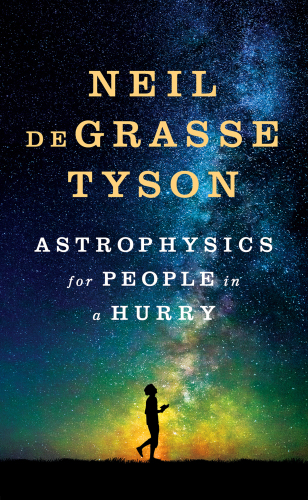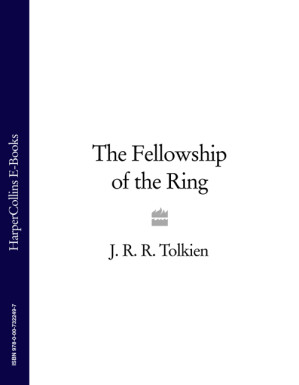The universe began with a bang and keeps expanding.
From a single point smaller than an atom, the entire observable universe emerged in a fraction of a second.

Book summary
by Neil deGrasse Tyson
Essential cosmic insights for the time-pressed
Universe essentials for busy readers in bite-sized chapters
Topics
Read one chapter per session to absorb the complex concepts without overwhelm. Use Readever to summarize Tyson's brilliant analogies that make cosmic phenomena relatable. After each essay, highlight the fundamental concepts and use the AI to explain complex astrophysical terms like dark matter and cosmic inflation. Track how Tyson builds from cosmic origins to humanity's place in the universe, creating a comprehensive cosmic narrative.
Things to know before reading
Neil deGrasse Tyson distills the universe's grandest mysteries into twelve accessible chapters originally published as essays in Natural History magazine. This 224-page guide from W. W. Norton & Company covers everything from the Big Bang to dark matter and our cosmic perspective, transforming complex astrophysics into digestible insights for curious minds short on time.
Tyson organizes the universe's story into bite-sized chapters that build from cosmic origins to humanity's cosmic perspective.
From a single point smaller than an atom, the entire observable universe emerged in a fraction of a second.
Only 5% of the universe consists of ordinary matter—the rest is invisible dark matter and mysterious dark energy.
We are made of stardust—the atoms in our bodies were forged in ancient stellar explosions.
Ready to continue? Launch the Readever reader and keep turning pages without paying a cent.
This summary gives you the cosmic literacy to discuss black holes, dark matter, and the universe's origins with confidence. You'll grasp fundamental astrophysical concepts that shape our understanding of reality and your place in the cosmos.
Key idea 1
From a single point smaller than an atom, the entire observable universe emerged in a fraction of a second.
Tyson explains the Big Bang theory as our best explanation for cosmic origins, detailing how space, time, and matter emerged from an infinitely dense point. He covers cosmic inflation, the formation of fundamental particles, and how the universe continues expanding today, with galaxies moving away from each other at accelerating rates.
Remember
Key idea 2
Only 5% of the universe consists of ordinary matter—the rest is invisible dark matter and mysterious dark energy.
Tyson reveals that most of the universe's mass-energy content remains invisible and mysterious. Dark matter provides the gravitational scaffolding for galaxies, while dark energy drives the accelerating expansion of the universe. These invisible components shape cosmic evolution far more than the stars and planets we can see.
Remember
Key idea 3
We are made of stardust—the atoms in our bodies were forged in ancient stellar explosions.
Tyson emphasizes that understanding our cosmic origins transforms how we see ourselves. The elements essential for life were created in stars and scattered across the universe by supernovae. This cosmic perspective connects us to the universe's grand narrative and highlights both our insignificance in scale and our significance as conscious observers.
Remember
Astrophysics for People in a Hurry condenses the fundamental concepts of modern astrophysics into twelve concise chapters. Neil deGrasse Tyson guides readers through the universe's greatest mysteries—from the Big Bang to black holes, from dark matter to the cosmic microwave background.
The book explores how scientists have pieced together the universe's history using observations, mathematics, and theoretical physics. Tyson makes complex topics accessible without oversimplifying, showing how our understanding of cosmic phenomena has evolved through centuries of discovery.
Open Readever's reader to highlight passages, ask the AI companion questions, and keep exploring without paying a cent.
Tyson's signature wit and clarity make complex astrophysical concepts approachable for general readers. The book's concise format delivers maximum insight per page, with each chapter building on the last to create a comprehensive cosmic narrative. While some concepts remain challenging, Tyson's analogies and plain language bridge the gap between scientific complexity and lay understanding.
Critical Reception: Published in May 2017 by W. W. Norton & Company, the book became a #1 New York Times bestseller and reached audiences worldwide. The collection originated from Tyson's popular essays in Natural History magazine, refined into a cohesive narrative that showcases his talent for making cosmic science comprehensible without oversimplification. Critics particularly praised how the book respects readers' intelligence while making complex topics accessible.
Curious readers who want to understand the universe but lack scientific background
Busy professionals seeking cosmic literacy in bite-sized portions
Students looking for an accessible introduction to astrophysics
Anyone fascinated by space, stars, and cosmic origins
Science enthusiasts wanting Tyson's signature perspective on the cosmos
Neil deGrasse Tyson is an American astrophysicist, author, and science communicator serving as the Frederick P. Rose Director of the Hayden Planetarium at the American Museum of Natural History in New York City. He has dedicated his career to making science accessible to the public through multiple media platforms.
Tyson earned his BA in physics from Harvard University and PhD in astrophysics from Columbia University. He hosts the popular podcast StarTalk and hosted the television series Cosmos: A Spacetime Odyssey, following in Carl Sagan's footsteps as a leading science popularizer. His research interests include star formation, exploding stars, dwarf galaxies, and the structure of the Milky Way. With millions of followers across social media and television appearances, Tyson has become one of the most recognizable science communicators of his generation.
Build your personalized reading stack
Download full-length ePubs in one click with personal cloud storage.
Blend AI-guided insights with tactile note-taking to accelerate reflection.
Follow curated reading journeys tailored to your goals and time budget.
Sync highlights across devices so lessons stick beyond the page.
Sign in to Readever to keep reading with AI guidance, instant summaries, and synced notes.
Astrophysics for People in a Hurry delivers cosmic literacy in concentrated form. Tyson shows that understanding the universe doesn't require advanced degrees—just curiosity and a willingness to explore fundamental questions about existence. The book leaves readers with both specific knowledge about cosmic phenomena and a transformed perspective on their place in the cosmos.
Add detailed content, analysis, and insights about Astrophysics for People in a Hurry here.
This extended outline can capture critical concepts, practical applications, and deeper understanding from the book. Use this space to provide comprehensive notes that enhance the reading experience.

Elizabeth Gilbert
Creative living beyond fear, embracing curiosity and inspiration as magic

J.R.R. Tolkien
Frodo begins his perilous journey to destroy the One Ring

Tom Kelley & David Kelley
Unleash your creative potential and overcome the 'I'm not creative' mindset
Start reading Astrophysics for People in a Hurry for free and unlock personalized book journeys with Readever.